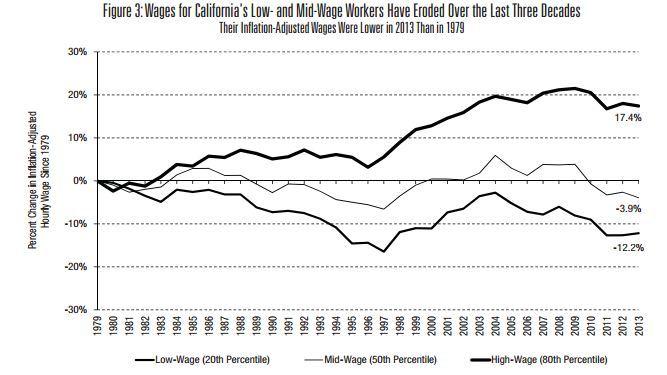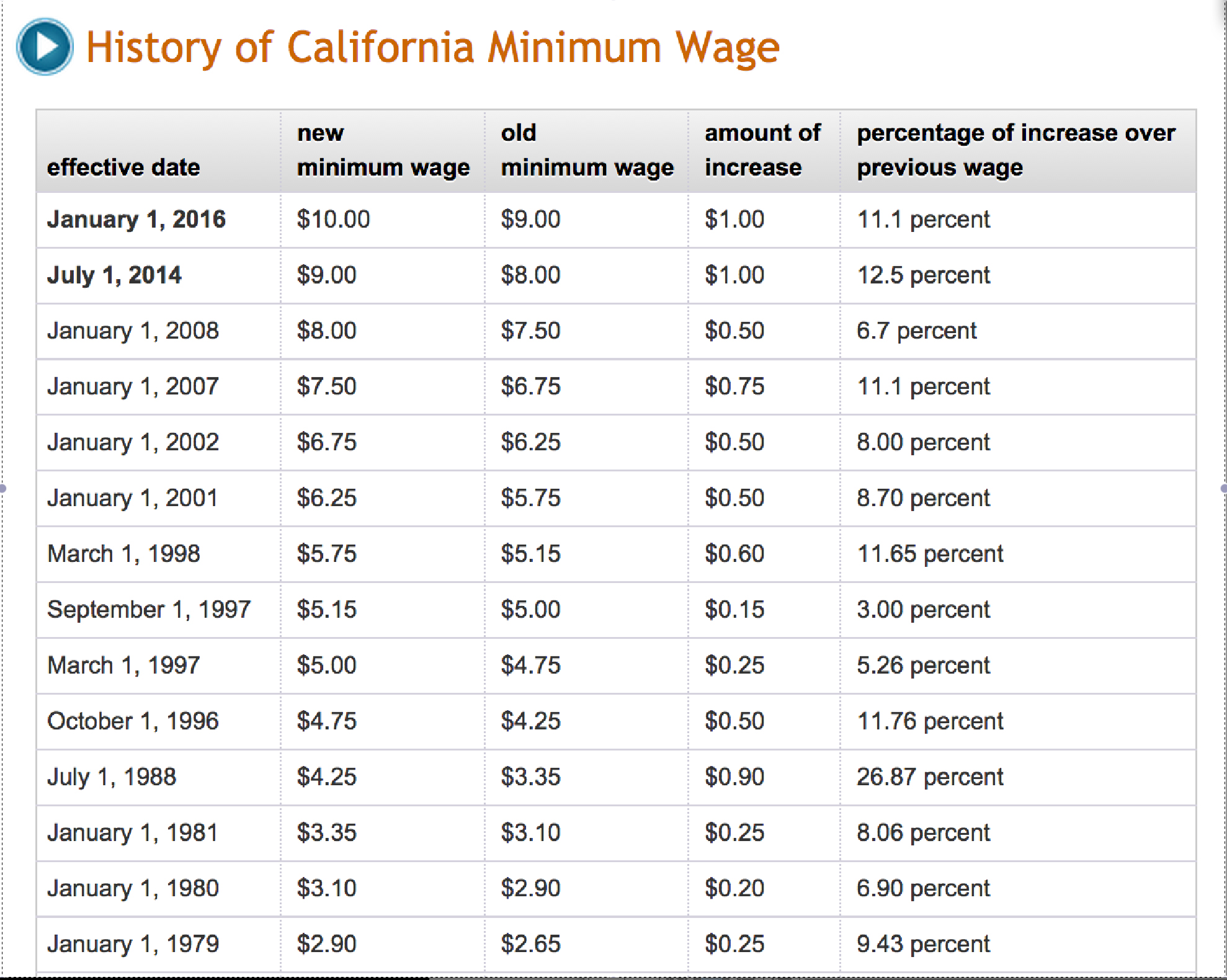California’s decreasing unemployment rate indicated the state is slowing healing the scar by the great recession, but looking in to the average wages, a growing share of lower-age jobs sheds doubts to the sign of economic recovery in California.
According to the statistics provided by the California Budget Project, low to middle-wage workers have been paid less over the last decade. By the end of last year, low-wage workers were paid 12.2% less than similar workers paid 35 years ago, after adjusting for inflation. In comparison, high-wage workers were paid 17.4% more than similar workers made in 1979.
Analysts forecasted that in the coming decade low-wage jobs will keep growing in the workforce market. Slow wage growth certainly shed doubts to economic recovery for low to middle wage Californians.
So what does this mean? California’s growing job market lift up the employment rate in the state and makes itself one of the fastest rates in the nation, but the growth of jobs is over concentrated in the growth of lower-wage workers. Indeed, not only California, the recovered job lost during the recession in the U.S. also comes with average of 23% less payment in the new jobs. Large percentage of low-income workers could indicate California pays less in support for higher education investments.
Some say that despite the increasing number of low-income workers, interestingly, the minimum wage of California has been increasing throughout decades. The current minimum wage is $9.00 per hour, far higher than $2.90 per hour in 1979. The newest minimum wage of $10.00/hour will be officiated in 2016.
However, the rising minimum wage does not necessarily indicate the diminishment of lower-income workers. Together with the increasing living expenses, people’s demand for salary increased throughout these years. Raising minimum wage is still in demand to boost the pay for low-wage workers to shrink the gap between low and high incomes. In the meantime, analysts advocate government to invest more in higher education, affordable preschool and after-school care to assist working parents.


Leave a Reply
You must be logged in to post a comment.